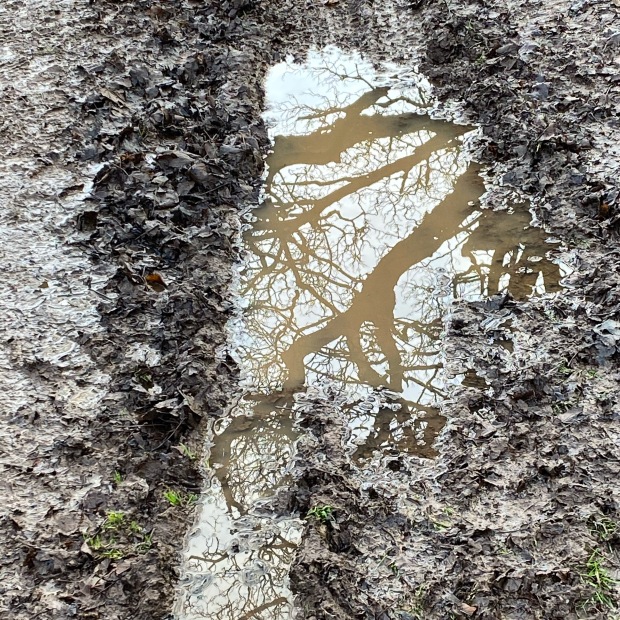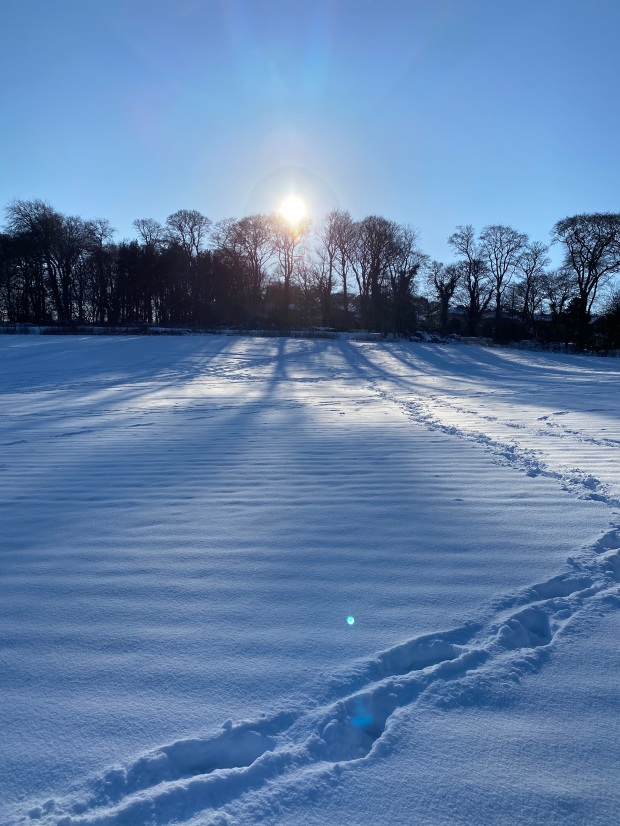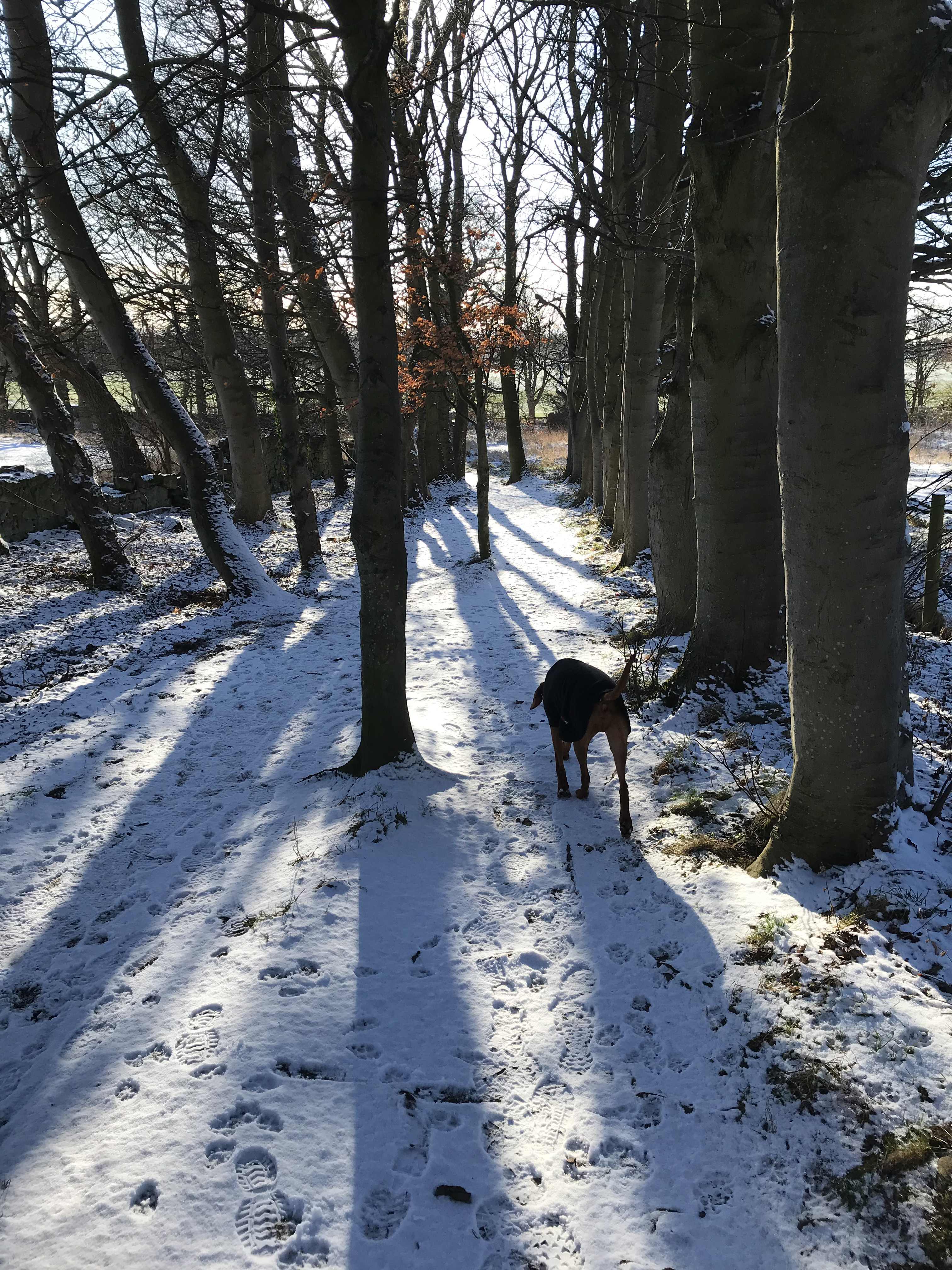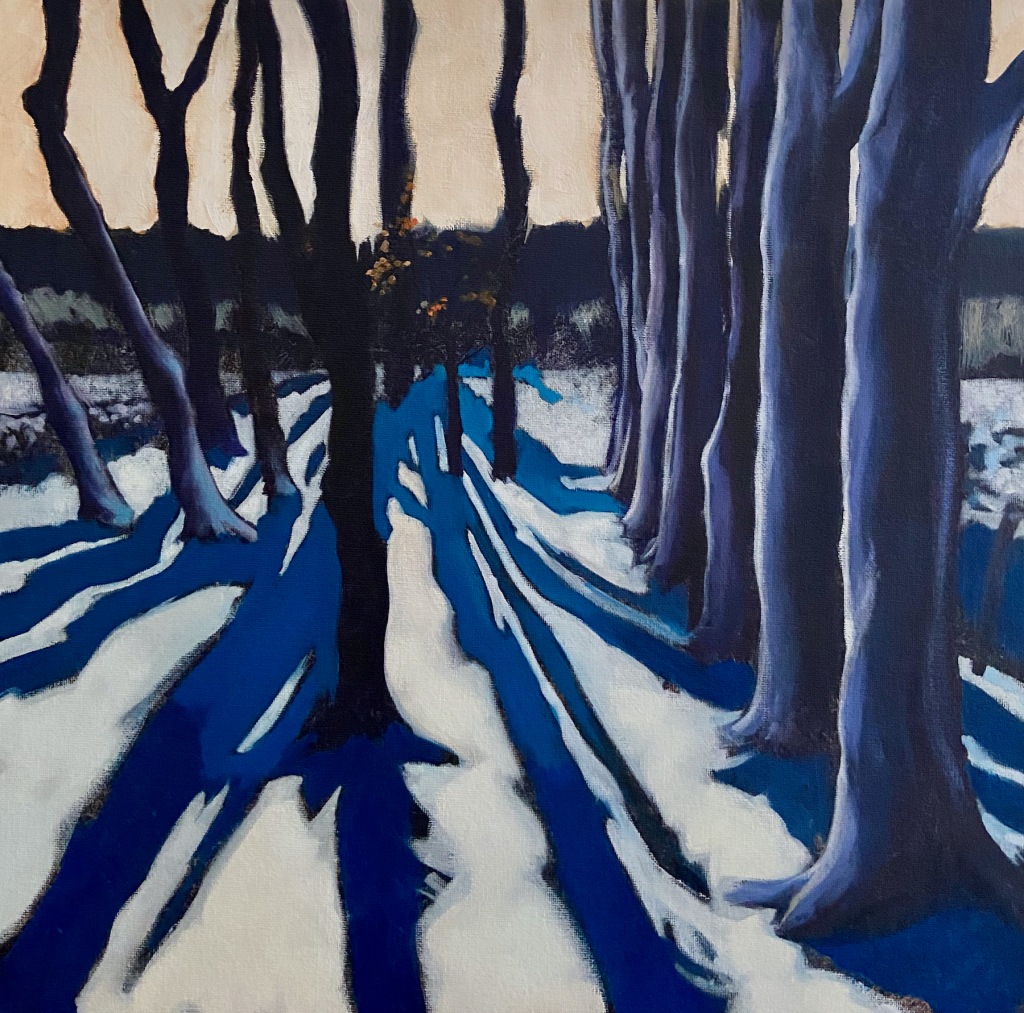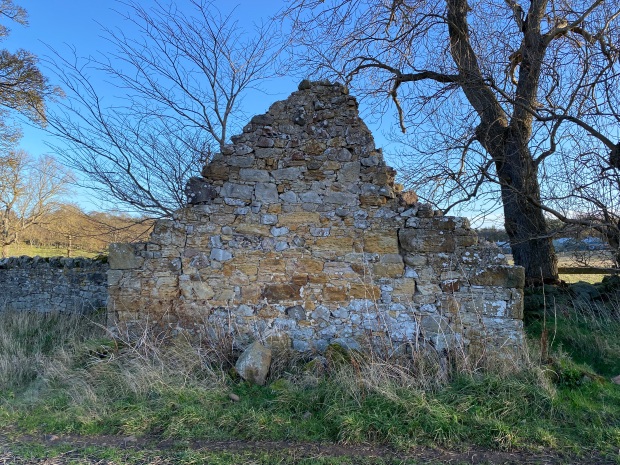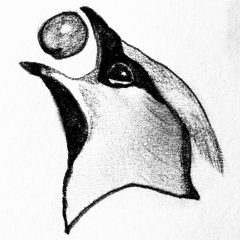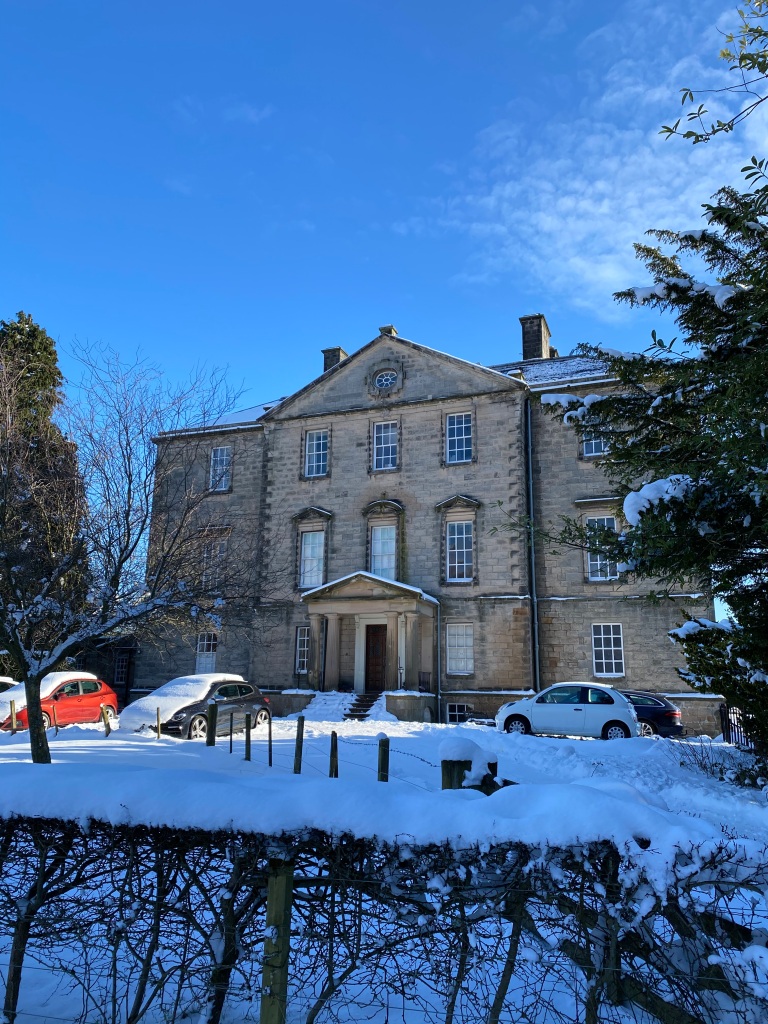
My sister-in-law said, ‘Get a dog you can pick up,’ but we ignored that. We wanted a proper dog. An artist friend then said, ‘Get a Vizsla, they’re wonderful.’ He’d had two of them as companions while he painted outdoors, so we assumed he knew whereof he spoke. They were definitely proper dogs. His first one had gone ‘sugar-faced’ in her old age – as Vizslas do (see below).
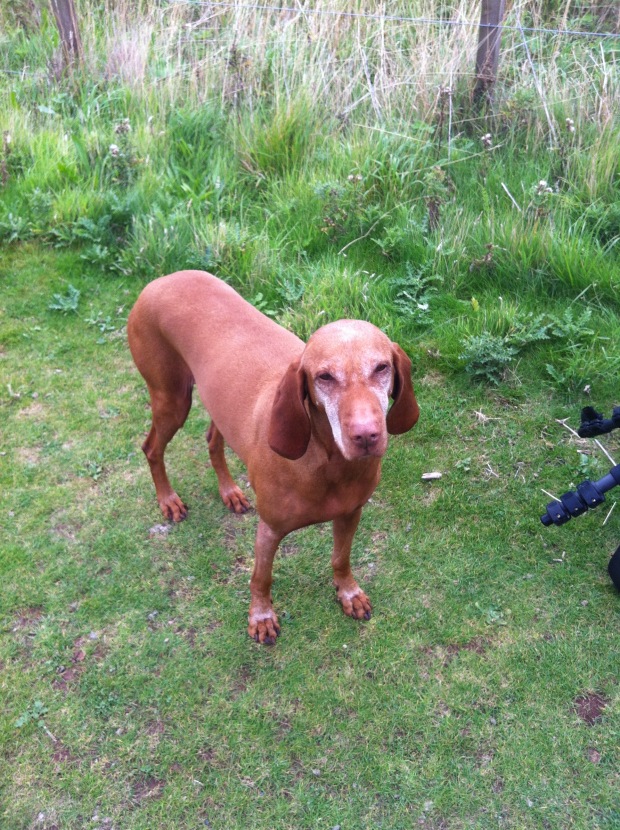
While mulling over our canine selection we spotted two lovely Vizslas in Stockbridge, trotting along beside their owner, off the lead, and thought, ‘We could do that.’ When we collected Louis aged eight weeks from a breeder near Balmaha we could easily pick him up; but that didn’t last. He shot up and soon weighed 31kg. His energy was boundless.
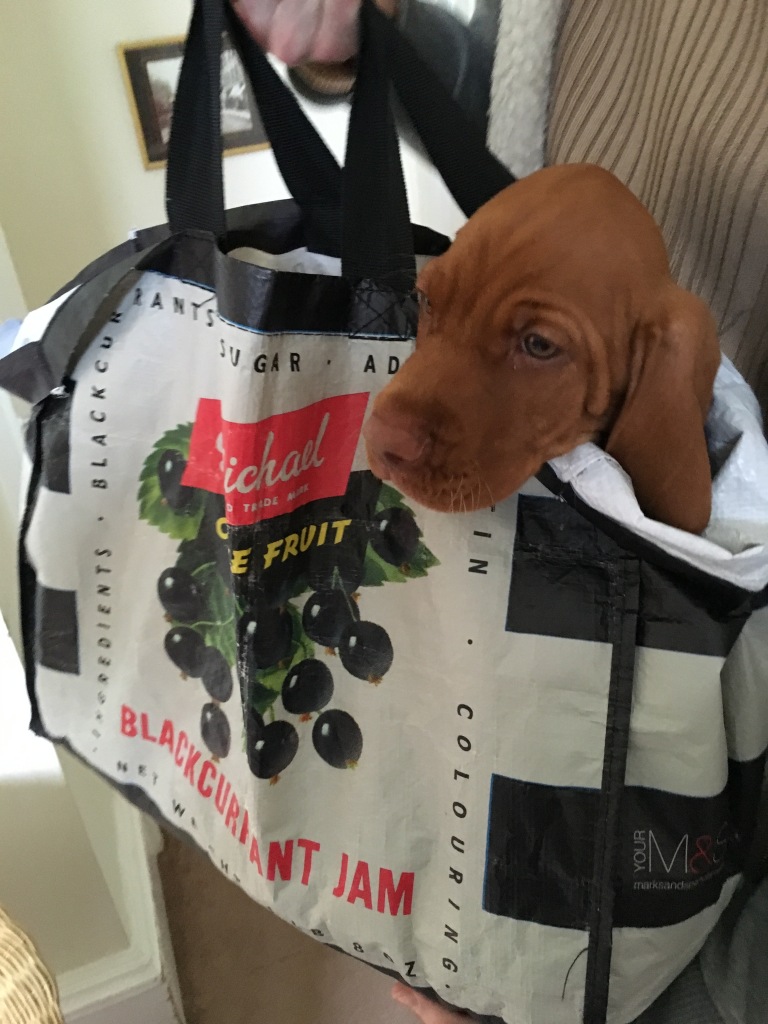
We went to the recommended puppy classes and followed our instructions to the letter, but Louis’ attention span was short and no amount of the recommended corrective jerking on his lead would keep him to heel for long. If a cat appeared nearby he would lose it completely. If that cat was on the other side of a busy road he would attempt to get at it. The dog trainer’s ‘two short tugs’ on the lead would then evolve into a protracted rodeo act with Louis scrabbling and wheezing and attempting to get off his ‘big angry dog’ bark.
Sans distractions Louis’ recall is actually quite good. He comes bouncing back to my farmer-style whistle and he will sit obediently until given permission to eat his supper. We were never going to ‘hunt, point or retrieve’ with him so it was clear we would need to find some other combination of physical exercise and mental stimulation to drain his energy and engage his restless mind. This would have to take place somewhere away from moving cars. We soon discovered Mortonhall Estate; somewhere we would never have visited without a dog.
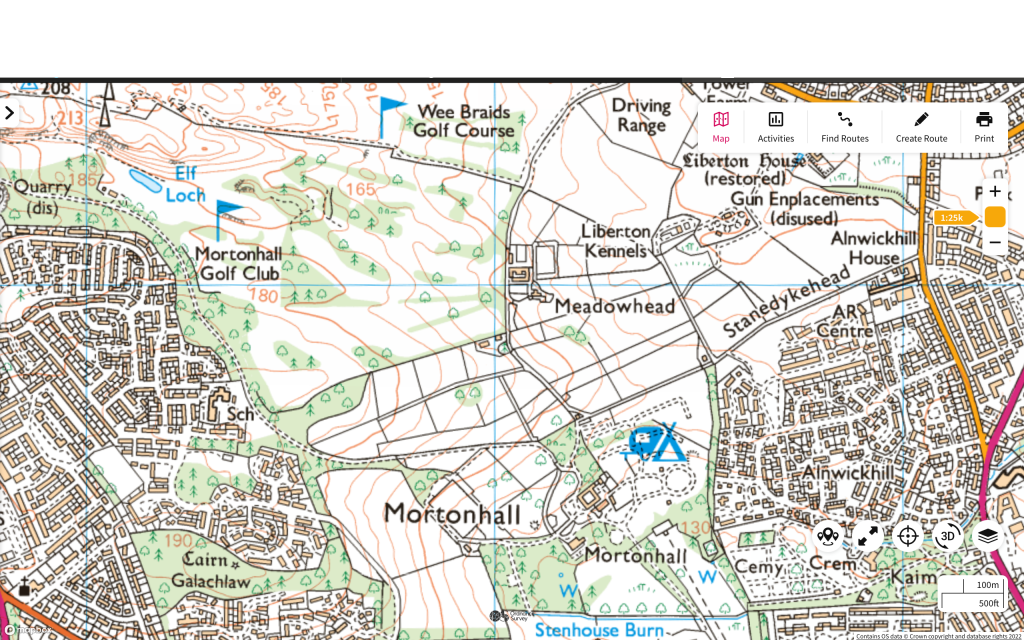
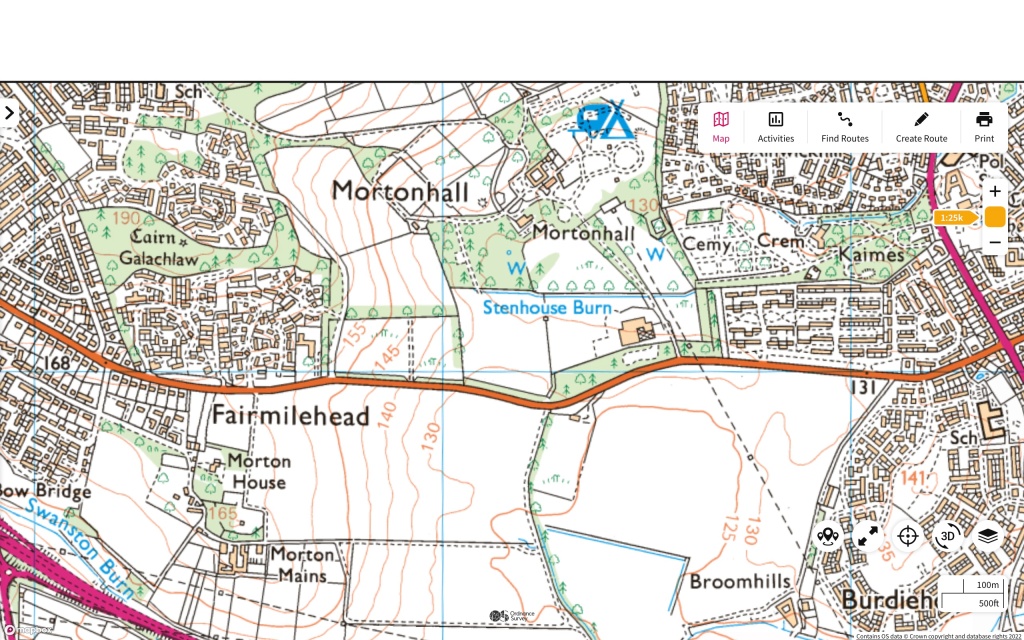
Mortonhall estate to the south of Edinburgh was once in the hands of the renowned St Clairs of Rosslyn but passed to the Trotter family in the early seventeenth century. In Greyfriars Kirkyard you can view the ancient Trotter mausoleum.
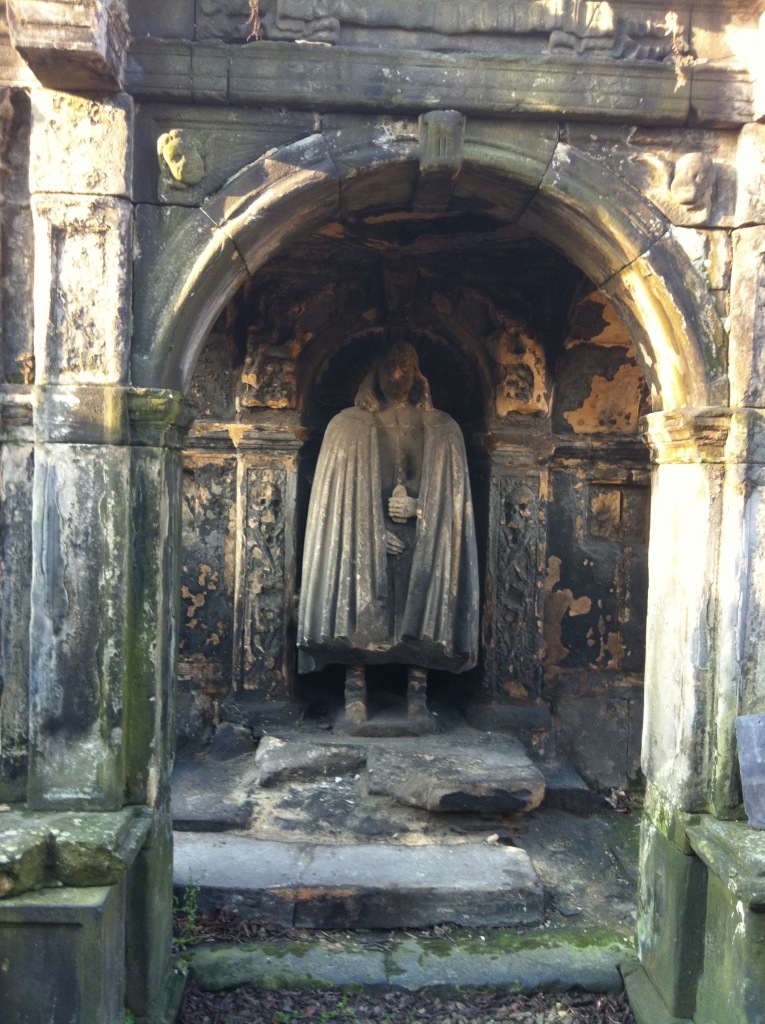
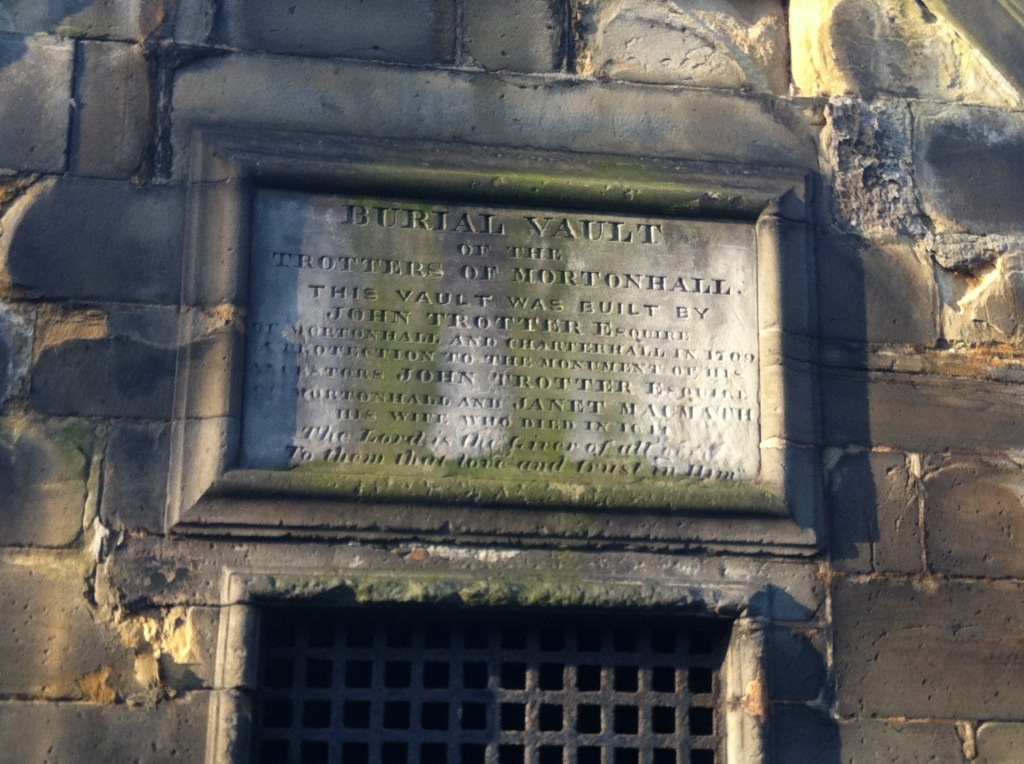
In the eighteenth century the Trotters built a large and rather plain residence on the site of a previous moated, fortified house. Nearby is an icehouse and a two acre walled garden, which has run to grass. The former garden outbuildings, the glasshouses and boiler houses are all ruinous. One of the lintels over a doorway is dated 1877. The house has been converted to flats and although they still own it, the Trotters are now based at their Berwickshire estate of Charterhall. Access to the facilities is from the south, via an entrance shared with a garden centre just off Frogston Road.

The original grand formal entrance at Kaimes on the east side of the estate featured double lodges flanking a long driveway curving through woodland towards the big house. The lodges were demolished to be replaced by the entrance lodge and driveway to a large crematorium designed by Sir Basil Spence. We have attended too many funerals there; as has most of the population of Edinburgh. Referring to something he considered unlikely of one of my old consultants used to say, ‘I’ll be a puff of smoke going up Mortonhall chimney before that happens.’
The formal gardens once included fountains and statuary and some of the plinths are still there. That garden is now more of a casual arboretum. Many of the trees are very old and very big. Every now and then an ailing giant comes down. The site is surrounded by wet marshy ground and the original tower must have been well defended by its soggy surroundings. Nearby, to the south west is Morton House, the dower house for Mortonhall, which is actually older than the main house.
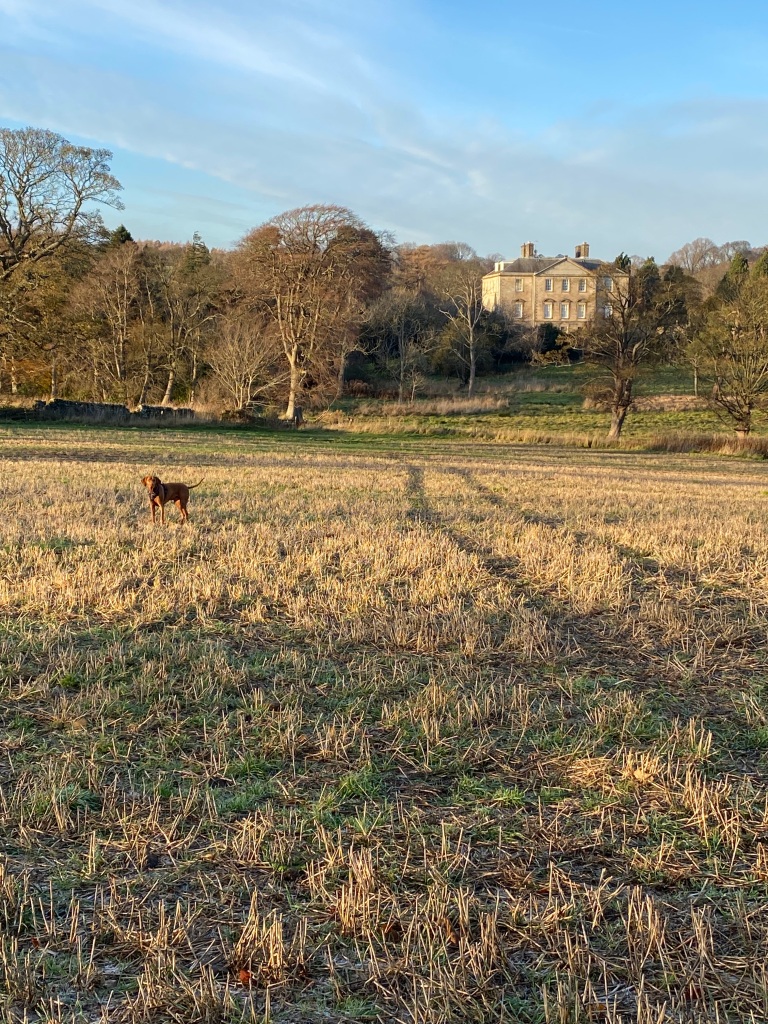
Before we walked dogs there I felt the garden centre a rather ugly addition to the relocated entrance to the house and grounds, but it is well-run and useful with a passable cafe and farm shop. The entrance is in any case an anonymous utilitarian affair. The stable block, with its enclosed courtyard, includes a pub and restaurant. It affords a cosy winter retreat with its log stove. It is associated with a large, high-quality campsite.
Apart from two ornamental highland bullocks that hang around the fields next to the drive, Mortonhall is all arable. There therefore are no sheep to ‘worry’ about but there are many horses, an example of the now widespread ‘horsey-culture’ as my farmer brother disdainfully calls it. In any case Louis’ principal interest in large herbivores is rolling in their dung. He will chase roe deer, but he gives up quickly.


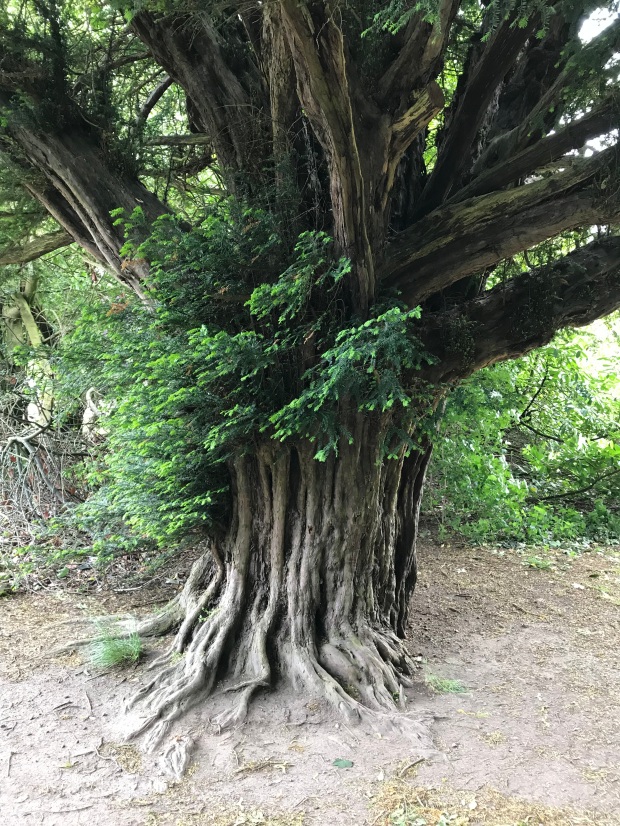
To the south, the Pentland Hills are marred by Hillend artificial ski slope – described by Rich Hall as ‘the local sport of carpet skiing’. Originally the enormous estate consisted of farms extending from Blackford Pond as far south as the peak of Allermuir at the north-eastern edge of the Pentlands. The family of Robert Louis Stevenson had a holiday home at Swanston Village which lies at the base of the Pentlands, near the ski slope. In Edinburgh, Picturesque Notes, RLS bemoaned the advance of the Edinburgh suburbs which were beginning their long encirclement of the estate.
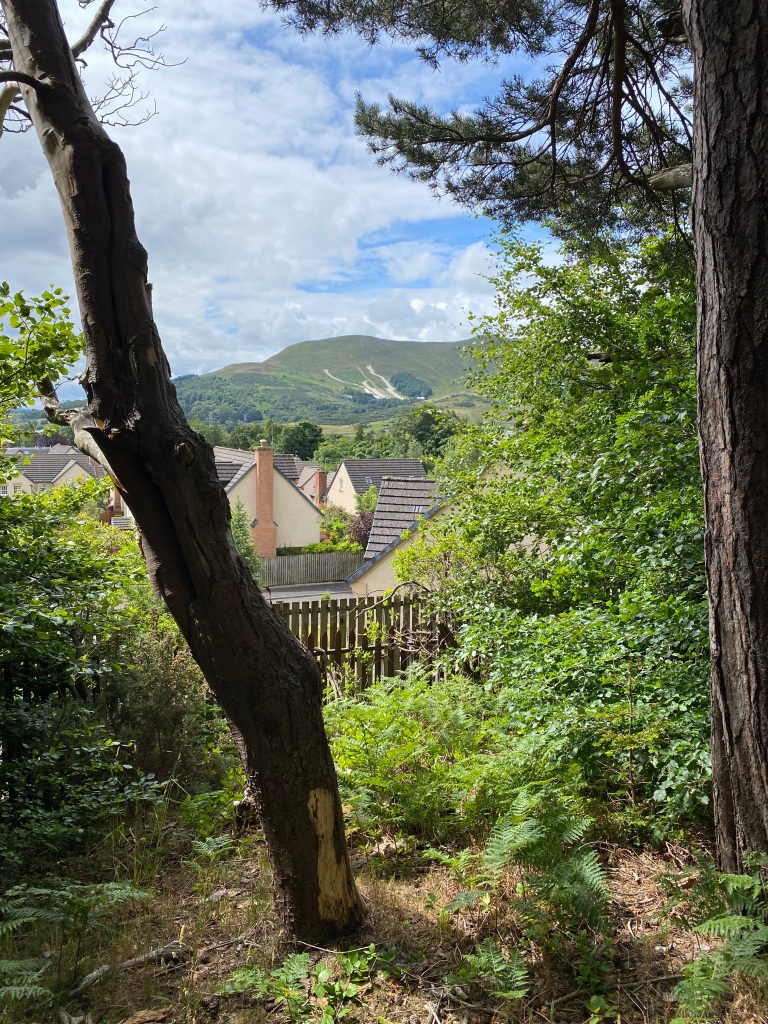
Caer is a Welsh prefix meaning fort, showing that Welsh was the ancient language of lowland Scotland – as also seen in the name of Caerlaverock Castle in Dumfriesshire.
The City of Edinburgh, Arthur’s Seat, and the Castle all lie to the north of the estate with the Firth of Forth and Fife beyond that. Mortonhall is part of a wedge of green land extending deep into Edinburgh as far as the Grange. This wedge takes in the rump of Mortonhall estate, the Braid Hills, the Hermitage of Braid, Blackford Hill and several fine golf courses. On the fairways you can still see the ridge and furrow marks, left by medieval ploughing. These features are known as riggs in Scotland. The edges of fields were still referred to as end riggs when I was a boy. Out walking, it is hard to believe you are so near the centre of a major city. Long country walks are possible over a variety of terrain with spectacular views.
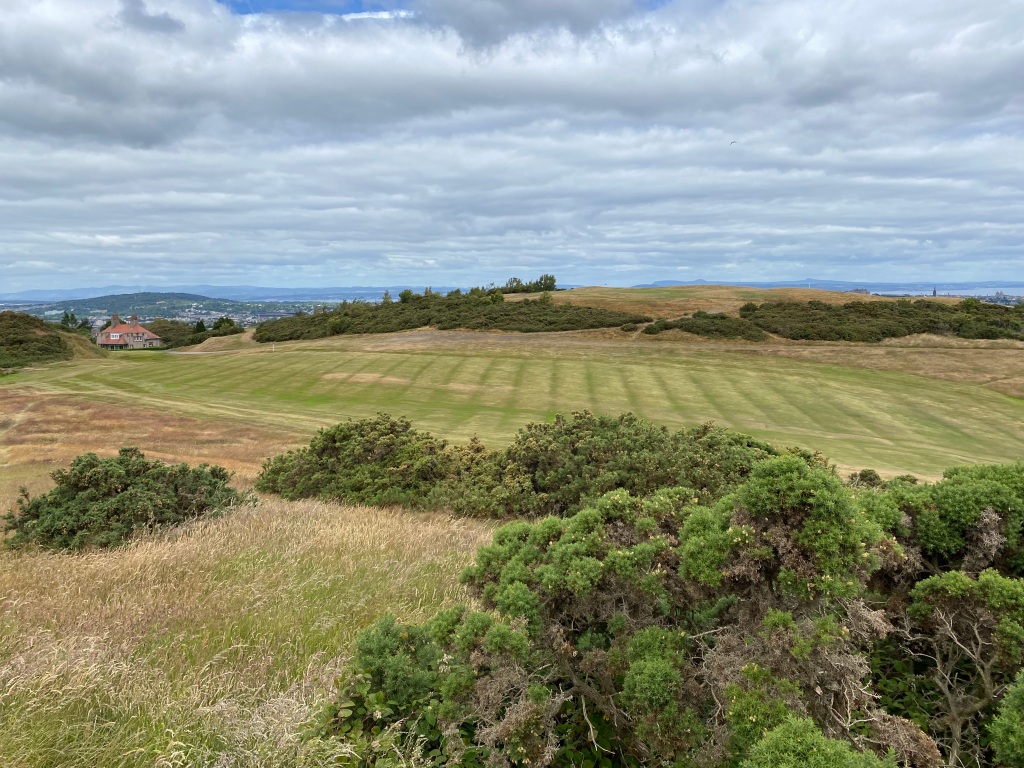
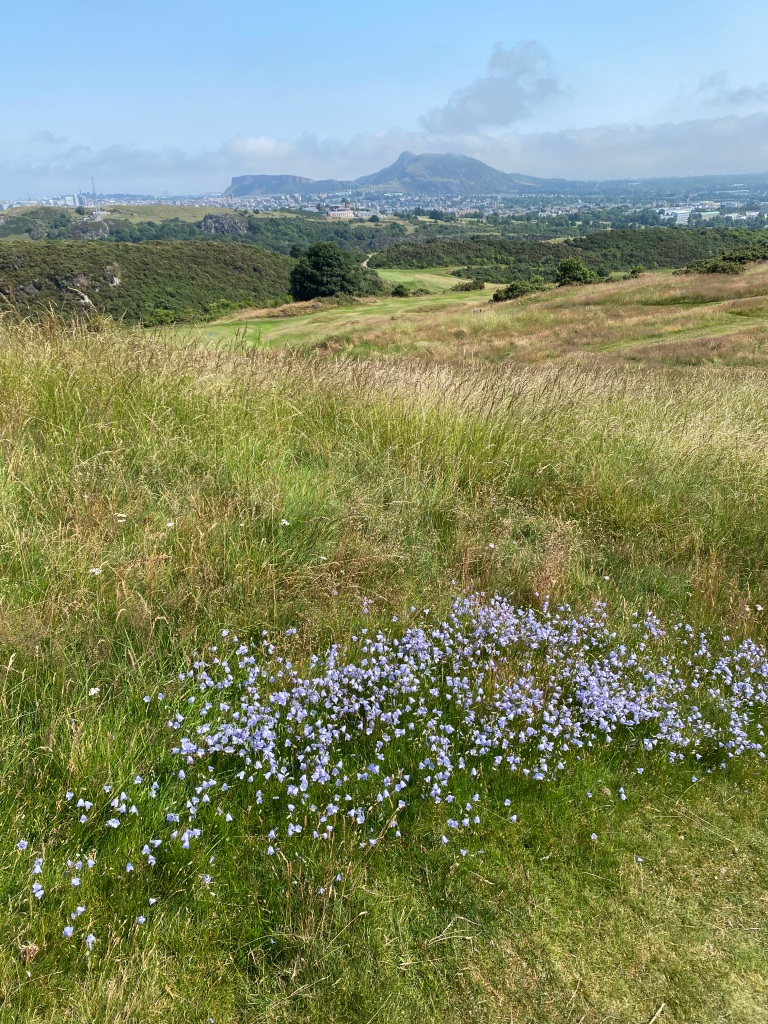
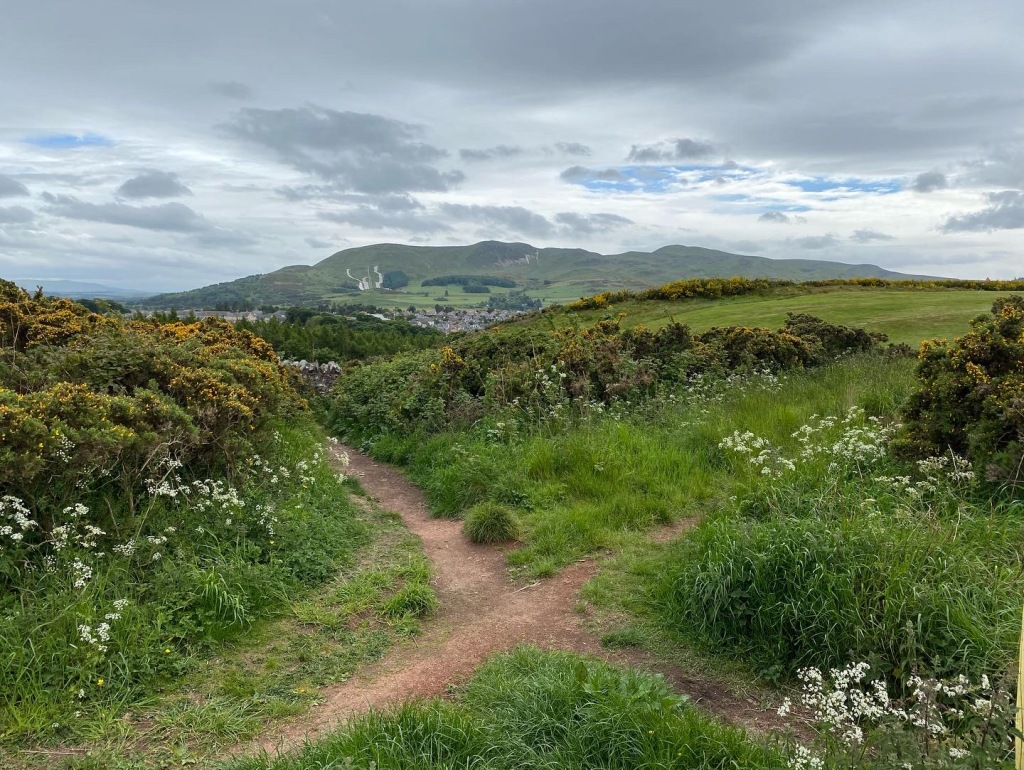
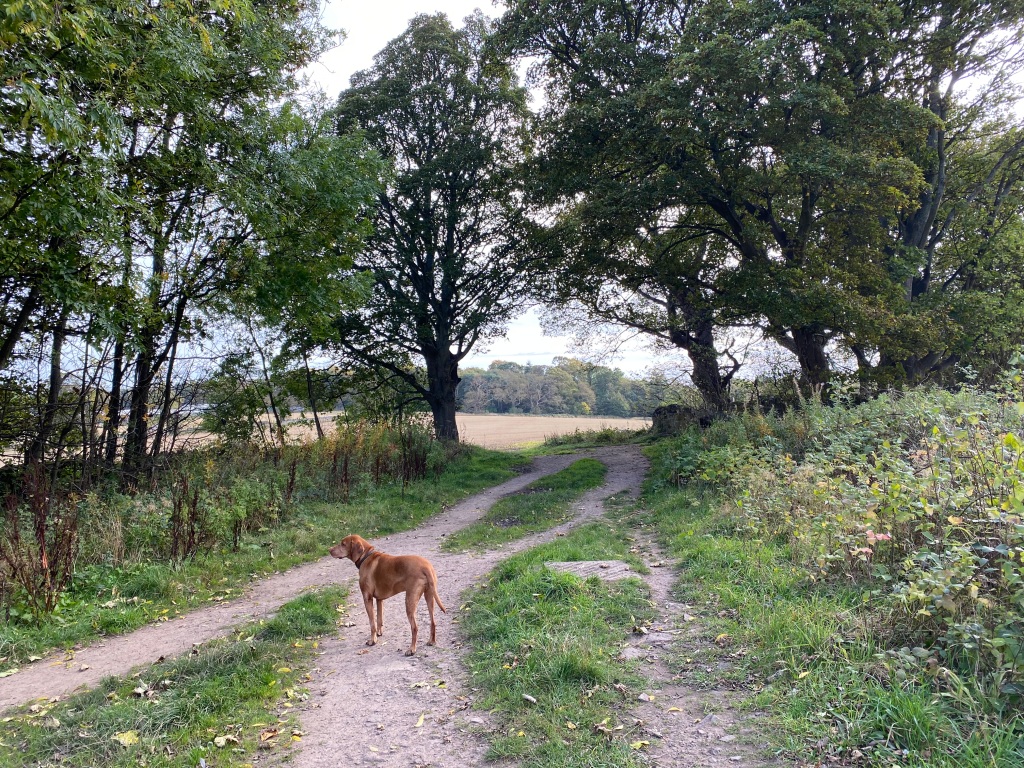
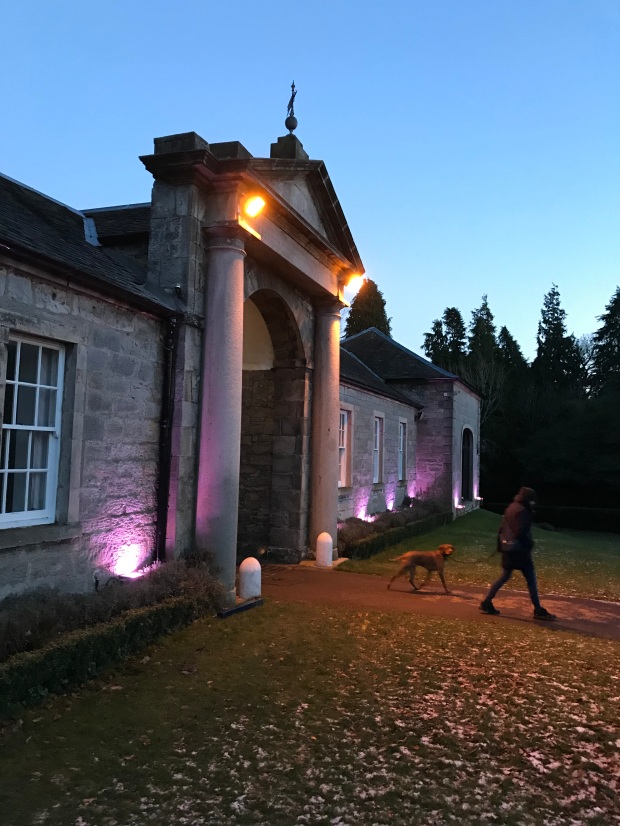
The main attraction of Mortonhall is long off-the-lead walks through woods and along the edge of arable fields. Watching the cycle of ploughing, sowing and harvesting is a great pleasure, giving me a connection to the farming year that I lost when I left home.
To the west, the woods of Galachlaw run along the northern boundary of what was once the Princess Margaret Rose Orthopaedic Hospital where I worked for two months of my junior house officer year. It is now a large housing estate which includes the converted residence where I slept while on call and where I once attended a mess Christmas party in 1979. The top of Galachlaw Hill is clothed in mature trees but it is still possible to identify the neolithic cairn marked on the OS maps above. Before the trees took over, the view to the hills would have been splendid. Cromwell’s army of 16,500 troops camped there before the Battle of Dunbar in 1650, a crushing defeat for the Scots who had declared Charles II King after the execution of his father.
The military connection doesn’t end there. As with many large country houses, Mortonhall was requisitioned during both world wars and extensive temporary buildings were constructed in the grounds for accommodation. The remains of these huts in the form of concrete footings and brickwork are everywhere. The huts are visible on the post war aerial photographs available on the National Library of Scotland website.
In World War I the Argyll and Sutherland Highlanders were based there. In World War II they housed the Durham Light Infantry. The huts were also used for Prisoners of War, and later displaced persons. It is impossible to look on the overgrown concrete floors and brickwork steps leading nowhere without thinking of the hundreds of souls who have passed through.
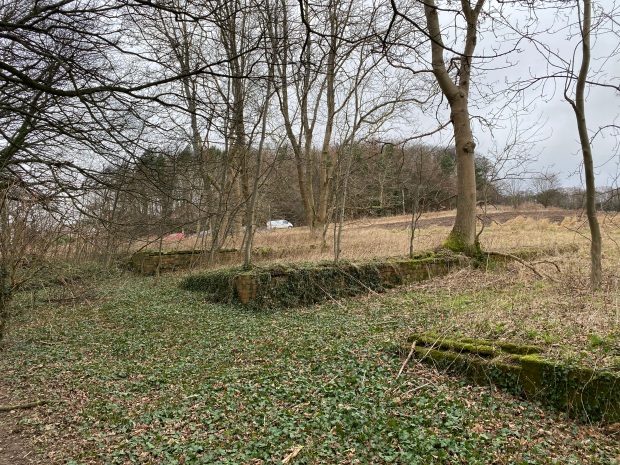

To the north east, near Meadowhead Farm lay one of the main anti-aircraft batteries defending Edinburgh in the Second World War. This is the site marked ‘Gun Emplacements’ on the OS map. The associated buildings retain the tall concrete fence posts with the inward-sloping tops that carried the barbed wire. There is an old sentry box at the entrance. These buildings are now a sanctuary for retired racing greyhounds.
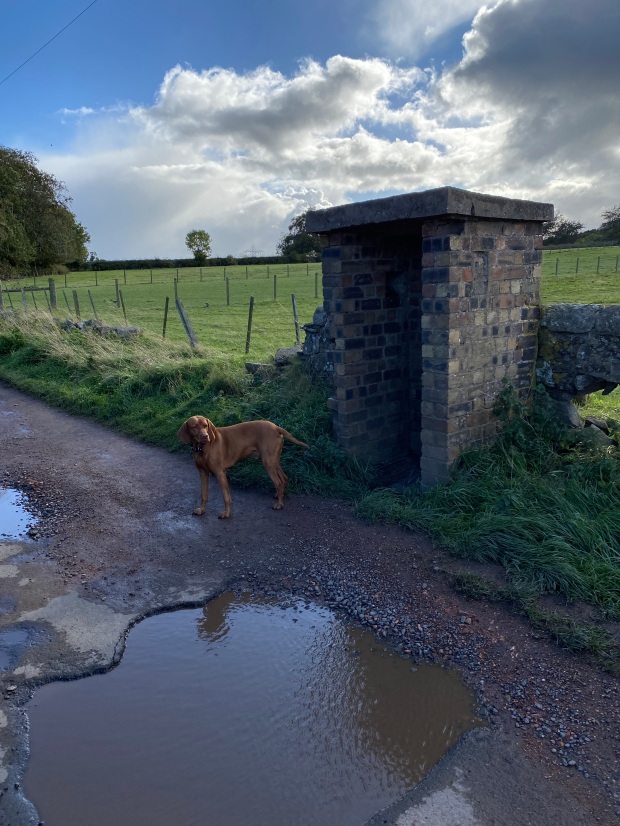

Still further to the north is Liberton House, a seventeenth century Laird’s house and a rare survivor. Nearby lies its precursor, the even older, and starkly rectangular, Liberton Tower, which dates to some time before 1453. It is more or less as originally constructed and is now a holiday let – with very small windows considering the remarkable views! Further north still lies the Royal Observatory on the shoulder of Blackford Hill.
We walk the estate several times a week throughout the seasons and Louis gets to run about off the lead. He chases squirrels endlessly but with only one disconcerting success in seven years. Perhaps the pursuit is the real pleasure. We are are on an affable chatting basis with several other dog owners whom we meet there regularly. None of us are very keen on the commercial dog walkers who turn up in their white vans with the inevitable punning titles displayed on the sides. The vans usually contain more dogs than an individual can safely manage.
The grounds of Mortonhall are lovely in all seasons but are at their most enchanting in winter as the autumn colours give way to snow with its blue shadows. Some seasonal shots and a painting by my wife Catherine are included below…
